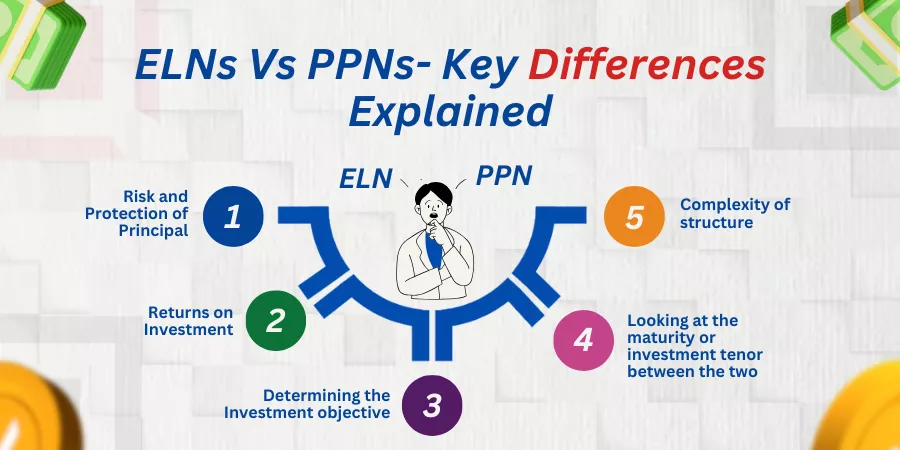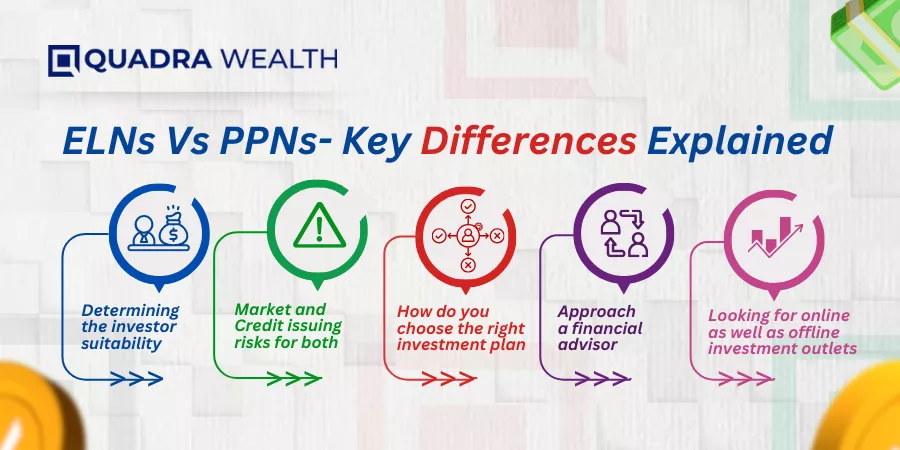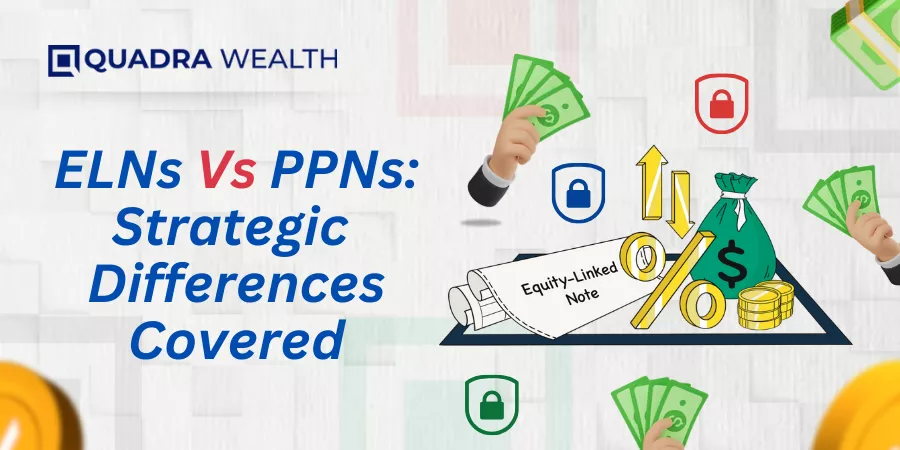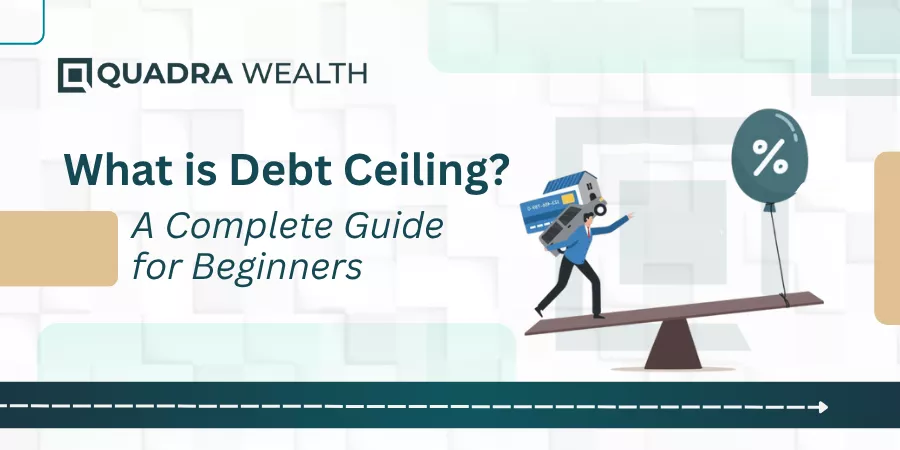Introduction
As a newbie in the field of investments and finances, it is easy to get carried away by the whole lot of investment options that are placed in front of you.
You might have equities, bonds, structured notes, mutual funds, real estate products, or ETFs that financial firms or investment companies keep talking to you about.
While bonds are fixed-income investment options, you get a moderate rate of returns on your initial investment. You get interest payouts or coupons from time to time.
Stocks or equities are subject to volatile markets in terms of bearish or bullish trends. You have rising or falling scenarios of stocks or commodities. Here, investors do not get a guarantee of their capital sum at the end of their investment. However, if the markets perform well, they can sell their shares or stocks at a higher profit margin improving their profits or income-earning potential.
Now, we have the third variant of investment option which is called structured notes. Here, you have a mix of bond and derivative components that can be customized with your investment preferences in mind. You can build an investment portfolio that is well within your risk-handling potential. In investing parlance, it is the risk tolerance ratio we are talking about.
Equity Linked Notes or ELNs and Principal Protected Notes or PPNs are both structured products that are held up for discussion here. Shall we learn the key points of differences covering ELNs Vs PPNs?
Helping you get started here with an overview of the concept and then deep-diving into the differential points of view between the two:
What are Equity Linked Notes or ELNs- Meaning and Conceptualization Explained
Equity Linked Notes or ELNs are structured notes wherein the notes are primarily linked to underlying equity. These include high-paying equity index shares, stocks, commodities, or futures to name a few.
The capital investment that is collected from investors is primarily utilized by product-issuing firms to buy high-paying stocks, shares, and other equity products.
The equity-linked assets are then exposed to the market volatility. Here, the investors may not get an exact return on capital.
However, the investors trade their capital sum over higher potential returns from the increase in price values of these equity-linked assets.
If the markets perform exceedingly well, then investors not only get their capital money back but they also earn fabulous returns on their investments. Here, investors earn coupons, dividend earnings, and other attractive investment-based emoluments.
On the contrary, if the market prices fail to pick up for these linked-in assets, then investors might not only get zero returns on their investments but also lose a fair portion of their capital wallet.
What are Principal Protected Notes or PPNs- Meaning and Conceptualization Explained
Principal Protected Notes or PPNs are notes that allow capital repayment to the investors at the end of the tenor period of the investor plan.
Here, the investor’s capital sum is invested in capital-protected assets like fixed-income securities, government-backed bonds, corporate mortgage bonds, real estate equities, and so on.
The investors get moderate rates of return on the PPNs and get a reasonable level of exposure to the derivatives. The best part is that they get their capital investment back at the end of the term period these PPNs are backed with.
On account of the capital protection aspect which is the strongly ingrained paradigm behind designing or issuance of PPNs, these investment options are preferred by traditional investors, retirees, pensioners, or other conservative segments of retail investors.
ELNs Vs PPNs- Key Differences Explained

These are the key points of differences covering ELNs Vs PPNs. Helping you get started here:
Risk and Protection of Principal
Equity-linked Notes or ELNs are notes that are usually linked to equity-based derivatives. Therefore, the assets might perform or surpass expected levels or underperform as well. The notes do not offer capital protection to investors. And, the potential returns on investment these notes garner depend on the performance of the linked-in assets these notes are tied with.
Whereas, principal-protected notes or PPNs are linked with mortgages, real-estate equities, and capital-protected bonds. The notes offer a complete degree of capital protection with moderate returns on the investment portfolios as such. In other words, the PPNs offer capital sum to investors regardless of the market performance of the assets these notes are linked with.
Returns on Investment or ROI
ELNs offer far higher returns than traditional bonds or fixed-income securities. This is because the linked-in assets of ELNs are directly exposed to the volatility of equity markets. Therefore, if the assets perform really well in the market, then investors get higher interest payouts, coupons, or dividend disbursements that add to a generous return on investment for the ELN-based portfolios as such. In a nutshell, these notes provide returns, the underlying assets lend in the market.
Whereas, with respect to PPNs, the investors receive lower or moderate rates of return on their investment portfolio. This is primarily due to the capital protection attribute the PPNs are backed with. However, investors receive regular interest payouts or coupons from PPNs. This becomes a regular source of income for retirees or pensioners who do not have access to 9-5 day jobs.
Determining the Investment objective
ELNs are more suitable for younger and highly risk-tolerant investors who do not mind trading their capital investment in return for higher rates of returns the ELNs are usually exposed to. The higher the risk they take with their capital sum, the higher is the returns as the ELN-based assets can appreciate exponentially under favorable market conditions.
Whereas, with respect to the PPNs, this is a type of investment that typically suits the safer-bet investors. The capital protection is the prime aspect of PPNs. At the same time, the investors also get limited exposure to market conditions. Here, retirees, pensioners, or conservative investors appeal to PPNs greatly.
In a nutshell, the PPNs only enjoy a lower participation rate of equity-based instruments in the secondary market as the product issuing firms have to repay full principal amount to the respective investors.
Looking at the maturity or investment tenor between the two
The maturity of ELNs might differ from one type of ELN to another type of ELN. The investors might not get their principal amount if the linked-in assets perform poorly in the markets during the time of maturity.
Whereas, with respect to PPNs, these notes come with a fixed tenor period at which the investor’s capital amount would be disbursed to them by product issuers of the same. Therefore, the investors feel that there is a certain level of certainty that entails PPNs on the whole.
On the whole, the PPNs are tied to debt instruments like bonds or mortgages and ELNs are tied to the performance of underlying equity and the returns on investment might spiral upwards or decline for ELNs based on the performance of the linked-in assets in the market.
Complexity of structure
ELNs are structured notes that are a little more complex as far as their structural outlay is concerned. This is because the note’s linked-in assets have call/put/ other hybrid options that give these assets complete exposure to the equity-based marketplaces. And the returns of investments the notes garner primarily depend on the performance of these assets in the market.
Whereas, with respect to PPNs, these are notes that are designed using simpler structures as you have the principal protection aspect as the main norm for investors. However, the notes are linked to other derivatives and have limited exposure to market conditions so the notes garner moderate rates of return on the investment portfolio of this investment option.

Determining the investor suitability
ELNs are usually meant for investors who have a high level of risk tolerance indeed. They might as well be even ready to give up on their initial capital investment in lieu of attracting more fabulous returns of linked-in assets the ELNs are exposed to.
Whereas the PPNs are meant for risk-averse investors and the notes are designed in such a way that investors earn their capital sum back regardless of how the assets perform in the market. Traditional or conservative investors who do not have a higher degree of risk tolerance therefore go in favor of PPNs as such.
Market and Credit issuing risks for both
Equity-linked notes are subject to high volatility in the markets. Rising or falling trends linked in equity-based assets garner better returns or income-earning potential along with investor’s capital investment.
At the same time, the ELNs might erode the capital wallet of investors if the linked-in assets do not perform well in the market. Plus, ELNs might erode if the credit issuer or product issuer signs up for liquidation or insolvency.
Whereas, with respect to PPNs, the capital protection norm of the notes remains intact regardless of market performance. However, if the creditworthiness of the product issuer of PPNs goes defunct on account of insolvency or bankruptcy, then the investors face the risk of losing their entire capital wallet.
How do you choose the right investment plan- Insights explained
How can you choose the right investment plan despite being a newbie or an amateur investor who has started your journey in the field of investing afresh?
Helping you with a run-down on pointers that are connected with the same:
Approach a financial advisor or an investment planner
A financial advisor or an investment planner will correctly analyze what your risk tolerance level is and suggest investment options that you are capable of handling under your financial belt.
When a risk profiling session is done online or via an investment office, you have a clear-cut idea of how you can choose customized investment solutions that align with the financial objectives you have in mind.
Looking for online as well as offline investment outlets
You must free up your time and space to hunt for well-tailored investment brands that are available inside your local neighborhoods or via online mediums.
As a newbie, it is not a bad idea to sit inside an investment office to look for your options and decipher the pros and cons that are affiliated with every single investment plan.
This exercise can help you steer on your financial journey the right way and ensure that you put your best foot forward.
The Bottom Line
You now know what ELNs are capable of providing you with vis-a-vis what a PPN is all about as an investment option.
You must however read offer documents carefully before investing.
What are your thoughts on this? Do mention it in the comments below!






